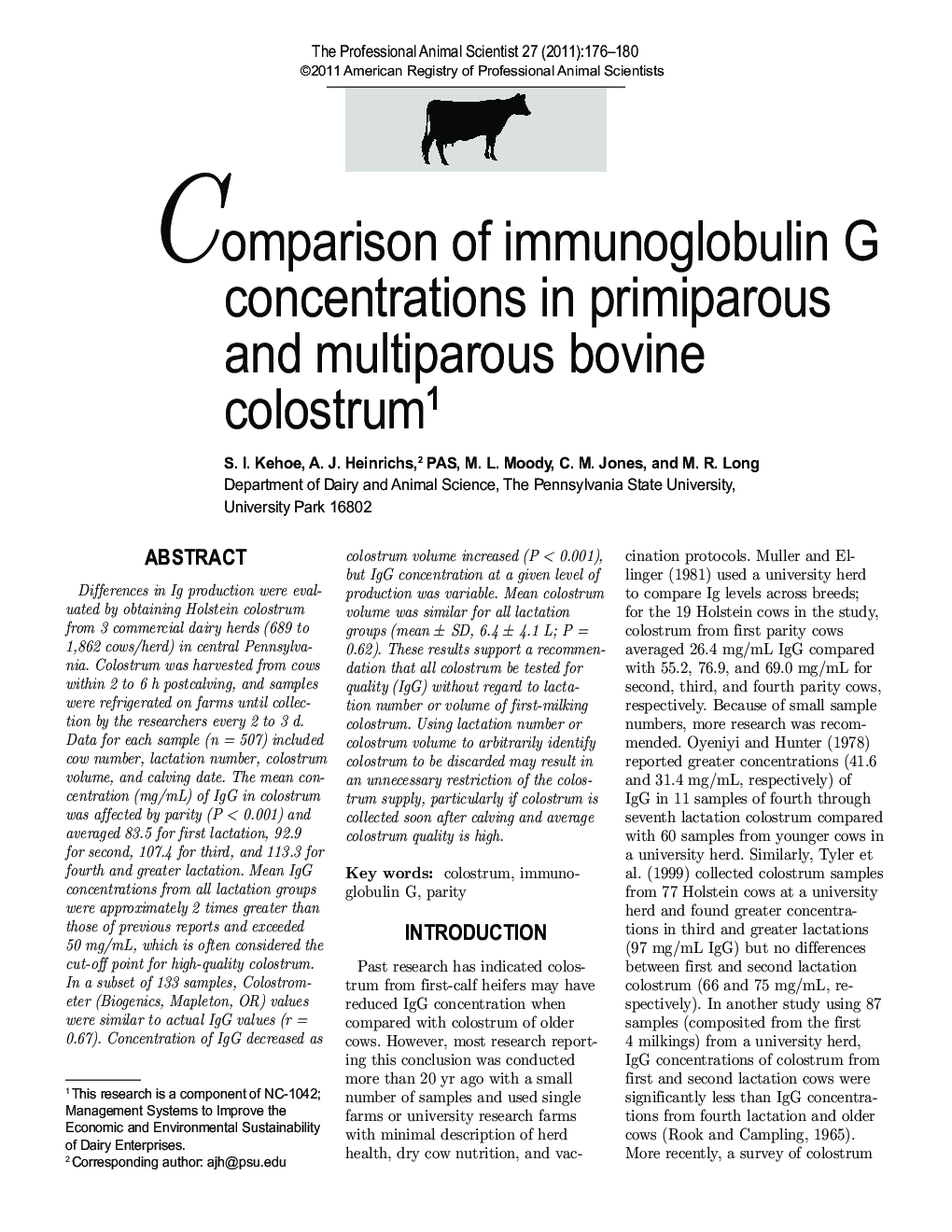| Article ID | Journal | Published Year | Pages | File Type |
|---|---|---|---|---|
| 2454014 | The Professional Animal Scientist | 2011 | 5 Pages |
Abstract
Differences in Ig production were evaluated by obtaining Holstein colostrum from 3 commercial dairy herds (689 to 1,862 cows/herd) in central Pennsylvania. Colostrum was harvested from cows within 2 to 6 h postcalving, and samples were refrigerated on farms until collection by the researchers every 2 to 3 d. Data for each sample (n = 507) included cow number, lactation number, colostrum volume, and calving date. The mean concentration (mg/mL) of IgG in colostrum was affected by parity (P < 0.001) and averaged 83.5 for first lactation, 92.9 for second, 107.4 for third, and 113.3 for fourth and greater lactation. Mean IgG concentrations from all lactation groups were approximately 2 times greater than those of previous reports and exceeded 50 mg/mL, which is often considered the cut-off point for high-quality colostrum. In a subset of 133 samples, Colostrometer (Biogenics, Mapleton, OR) values were similar to actual IgG values (r = 0.67). Concentration of IgG decreased as colostrum volume increased (P < 0.001), but IgG concentration at a given level of production was variable. Mean colostrum volume was similar for all lactation groups (mean ± SD, 6.4 ± 4.1 L; P = 0.62). These results support a recommendation that all colostrum be tested for quality (IgG) without regard to lactation number or volume of first-milking colostrum. Using lactation number or colostrum volume to arbitrarily identify colostrum to be discarded may result in an unnecessary restriction of the colostrum supply, particularly if colostrum is collected soon after calving and average colostrum quality is high.
Keywords
Related Topics
Life Sciences
Agricultural and Biological Sciences
Animal Science and Zoology
Authors
S.I. Kehoe, A.J. PAS, M.L. Moody, C.M. Jones, M.R. Long,
